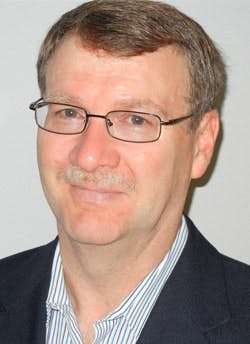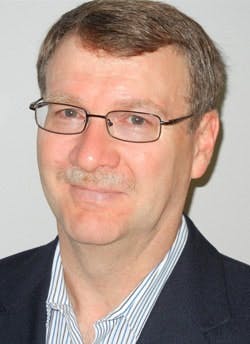Improve plant productivity with communication, data gathering, and analysis
Chuck Armbruster is corporate reliability engineering manager at J.M. Smucker (www.smuckers.com), a manufacturer of food products headquartered in Orrville, Ohio. The company, with a history spanning more than a decade, offers products designed to “bring families together to share memorable meals and moments.”
Armbruster’s title is the same today as it was when he was chairman of the Society for Maintenance & Reliability Professionals (SMRP, www.smrp.org) in 2005-2006. “While the title has remained constant, the role has changed to include leading operational effectiveness measurement, corporate progressive maintenance leadership, leading maintenance ERP initiatives, and providing a variety of corporate maintenance and reliability support,” he says. Armbruster is a degreed engineer and has more than 35 years of experience in engineering, maintenance, operations, and construction. And he has worked in the pharmaceutical, construction, construction materials manufacturing, and food processing industries. He recently answered a few questions about the past, present, and future of maintenance and reliability.
PS: What are the big changes you've seen in maintenance and reliability from when you were SMRP chair to now?
CA: Information is much more accessible because of the Internet, digital files, and comprehensive work order attachments. The current cycle of distributed maintenance has changed, too. Operations teams are also maintaining their assets, instead of relying on a central maintenance department to perform all of the maintenance and reliability tasks. As a result, there’s a higher overall level of trained individuals in the operations workforce. By contrast, there’s a severe shortage of highly trained maintenance technicians. Because of the greater precision that current technology provides, technicians must have the knowledge to make it truly effective. Fortunately, more maintenance and reliability decisions are now data-driven. ERP and CMMS software contains more accurate information through data cleansing and that information can be leveraged for greater profitability. To be effective, organization must utilize data standards and the discipline to maintain them.
PS: What is the one accomplishment under your leadership that you're most proud of?
CA: The Society for Maintenance & Reliability Professionals was 14 years old when I was chairman. However, when it was first conceived, it was supported by part-time clerical efforts sponsored by Bob Baldwin. Later, as it grew, Joe Petersen and Kay Goulding provided "corporate" support, including managing membership duties, publishing Solutions, and coordinating annual conference tasks. In 2005, we vetted and selected our first full-time executive director, and, a year later, we did the same for a full-resource association management team. It was challenging and rewarding to develop that organization model.
PS: Who in the SMRP organization had the biggest influence on you and your career?
CA: Certainly the officers spend the most time together, so I fondly recall working with Tony Kuester, Tom Brink, Larry Cote, Tom Byerley, Tim Goshert, and David Staat. Those whom I consider mentors would include Al Weber, George Connaughton, Fred Dunbrack, Jack Nicholas, John Moubray, Butch DiMezzo, Ray Oliverson, and Bob DiStefano. I appreciated working with all of my maintenance and reliability colleagues. Some of the names include John Schultz, Gerry Putt, Chad Sayles, Drew Troyer, Terry O'Hanlon, Ramesh Gulati, Doc Palmer, Mike Barrett, Rick Baldridge, Terry Harris, and Larry Hoing. But to narrow it down, the most influential role model for me was thought
leader and author, Ron Moore.
PS: Where is the maintenance and reliability profession headed, and where would you like to see it go?
CA: My first SMRP experience was its "Maintenance and Operations Partnering for Business Results" annual conference held in Atlanta in 1996. I was hooked. I believe we are still working on that integration path and will continue to for some time to come. There are still losses in our plants that we can avoid simply through better communication, data gathering and analysis, and listening to ideas from those closest to the areas where the opportunities exist. The utilization of greater precision and the use of standards, including the ANSI-certified SMRPCO exams, will continue. The need to fully train to sustain maintenance and reliability skills and systems will be present forever, or at least until they can be partially engineered out. It was rewarding to return to SMRP's 20th anniversary conference this past fall. The maintenance and reliability community is in good hands with current membership taking leadership steps toward the future.

